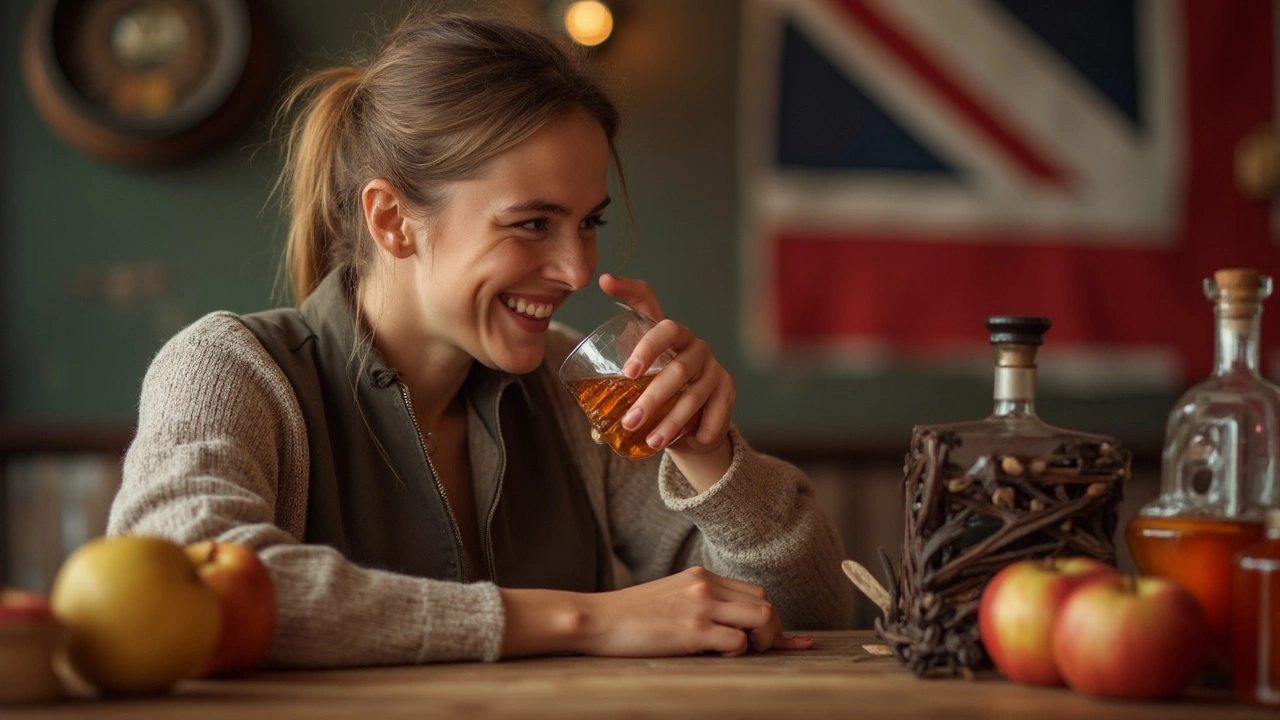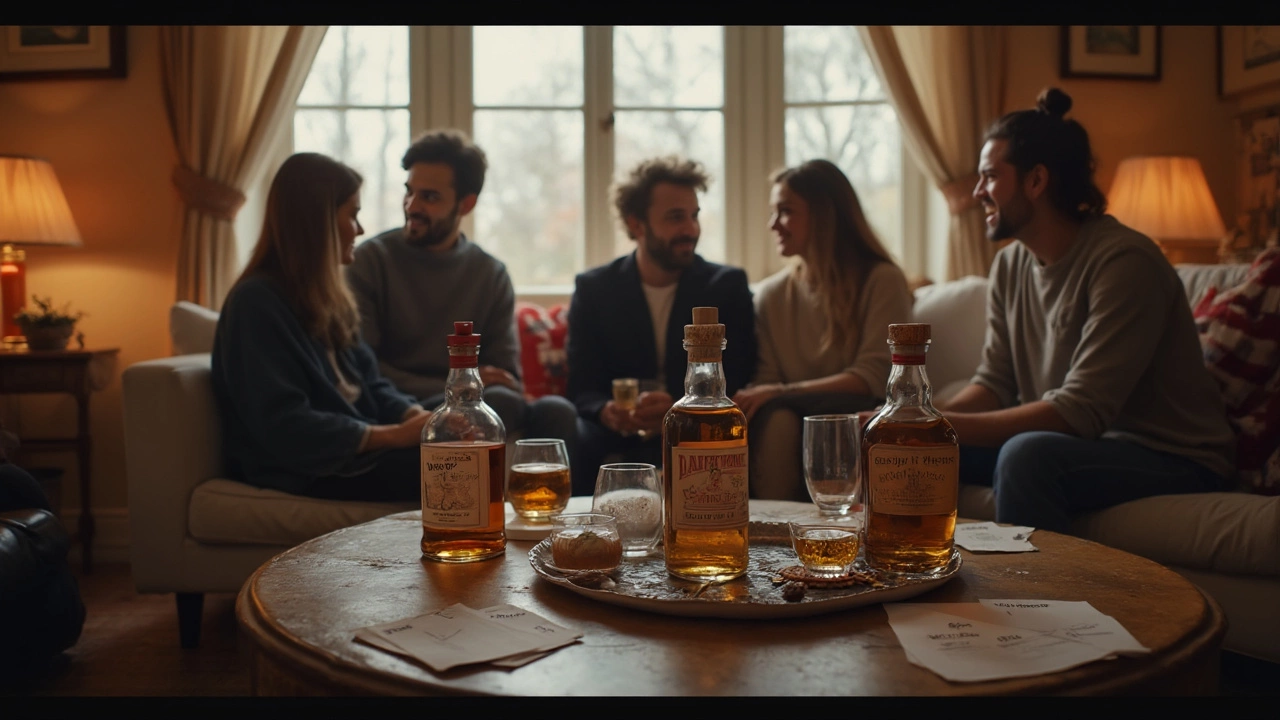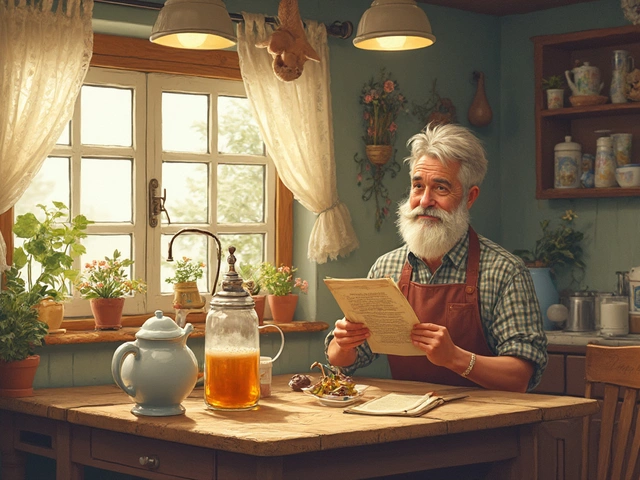The first sip of whiskey can feel like a punch in the mouth. That burn? Totally normal. Even longtime fans started somewhere, and almost nobody loves that sharp bite right from the get-go.
If you want to actually enjoy whiskey instead of forcing it down, the trick is building up your taste buds over time. It’s not about toughness or faking it—it’s about learning, like how you maybe used to hate black coffee but now crave it.
The worst thing you can do? Dive into the strongest, peatiest dram you can find and hope for the best. Instead, start simple, go slow, and pay attention to the little flavors as they pop up. There are no gold medals for powering through a glass you can barely swallow. Let’s make it way easier—and even pretty fun.
- Why Whiskey Tastes the Way It Does
- Start Easy: Choosing Beginner-Friendly Bottles
- Tasting Tips to Train Your Palate
- Mixing and Matching: Making Whiskey More Approachable
Why Whiskey Tastes the Way It Does
Ever wonder why whiskey tasting can be so intense, especially for newbies? It all comes down to what’s inside the bottle and how it’s made. Whiskey’s taste is shaped by a handful of big factors: the grains used, the type of barrel it sits in, how long it ages, and the alcohol content. Each step throws something different into the mix.
The most basic flavors in whiskey start with the grains—think barley, corn, rye, or wheat. Some are sweet (like corn in bourbon), some bring a spicy kick (that’s rye), and others are super smooth (wheat is your friend here). But the real magic? That happens in the barrel. Most whiskeys age for years in oak barrels, which give off vanilla, caramel, and toasted flavors. The longer it sits, the more these flavors soak in, but the stronger and more complex things get. In Scotland, single malts often hang out in casks for a decade or longer. In the US, bourbon usually chills for at least two years, but the good stuff is often four or more.
Then there’s the burn—thanks to high alcohol. Most whiskey sits between 40–50% ABV (alcohol by volume), which hits hard if you’re new to it. Don’t worry, your tongue and throat get used to it the more you try.
- Peat: Some Scotch is made with smoky peat fires, which is where the campfire smell and taste come from. Not every whiskey does this, but if you pick up a bottle from Islay, brace yourself.
- Water: How much a whiskey is watered down after aging changes its strength and smoothness.
- Age: Older doesn’t always mean better for everyone, but it usually means more oak flavors and less bite.
| Factor | How It Affects Taste |
|---|---|
| Grains | Some are sweet, some spicy, some mellow |
| Barrel Aging | Adds vanilla, caramel, spice |
| Alcohol Content | More alcohol = more burn |
| Peat | Smokiness (mainly in Scotch) |
So when you cringe after a sip, remember: it’s not just “strong.” You’re actually getting hit with loads of flavors all at once. That’s the challenge, but also what makes getting into whiskey tasting kind of addictive.
Start Easy: Choosing Beginner-Friendly Bottles
Picking your first bottle can set the tone for your whole whiskey tasting journey. If you grab something that's too bold or smoky, you might convince yourself you'll never like whiskey at all. The trick? Go for labels that are known for being smooth and approachable, not ones famous for burning a hole in your throat.
American bourbons and Irish whiskeys usually make a great starting point. Bourbon tends to be a bit sweeter, thanks to the corn in the mash, and Irish whiskey is often triple-distilled, making it smoother. If you can't handle that campfire taste you hear about in Scotch, don't worry—there are plenty without that intense smoky flavor. Here are a few bottles a lot of newbies find easy to sip:
- Buffalo Trace Bourbon: It’s mildly sweet, not too fiery, and pretty easy to find.
- Bulleit Bourbon: Citrusy and easy-going, works just as well neat or mixed.
- Jameson Irish Whiskey: Super smooth, with a hint of vanilla and no sharp edges.
- Redbreast 12 Year Old: A bit pricier, but many beginners say the creamy texture is worth it.
- Monkey Shoulder Blended Malt Scotch: This is a scotch, but it’s blended to be gentle—less smoke, more malt and honey.
Some folks like to start with those tiny sampler bottles, called "minis," to try a few without blowing their budget. Don’t fall for the hype or fancy labels. Ratings from real people online are usually a safer bet than advertising claims.
If you’re curious about price and proof, this table gives you a quick idea of what to expect from these beginner-friendly options (as of 2025):
| Whiskey | Type | Average Price (750ml) | ABV |
|---|---|---|---|
| Buffalo Trace | Bourbon | $30 | 45% |
| Bulleit Bourbon | Bourbon | $35 | 45% |
| Jameson | Irish | $28 | 40% |
| Redbreast 12yo | Irish | $70 | 40% |
| Monkey Shoulder | Scotch (Blended) | $35 | 40% |
The bottom line? Don’t rush or worry about what others think. Start at the gentle end of the spectrum, and you'll actually want to pour your next glass instead of dreading it.

Tasting Tips to Train Your Palate
Don’t just gulp and hope for the best. Training your palate takes a bit of patience and attention, but it can turn every glass of whiskey tasting into a game for your senses. Here’s how to dial up your whiskey enjoyment, one sip at a time.
- Pour a Small Amount: Start with a shot or less. Less is more when you’re getting used to whiskey for beginners. Too much at once can overwhelm your taste buds and make the burn worse.
- Take a Gentle Sniff: Stick your nose a bit above the rim, not inside the glass. Take a few slow breaths. Notice anything besides alcohol? You might catch whiffs of vanilla, caramel, or even fruit in sweeter whiskeys. Your nose does half the work.
- Add a Drop of Water: This isn’t cheating. A splash of water opens up hidden flavors, tames harshness, and helps you spot notes you’d otherwise miss. It’s a trick used by all kinds of pros.
- Hold and Swirl: Roll the taste whiskey around your tongue for a couple of seconds before swallowing. This gives your palate a chance to catch spice, sweetness, or even-smoky flavors without just feeling fire.
- Compare Back-to-Back: Taste a couple of different brands side by side. It’s easier to notice flavors or differences when you compare, and small changes stand out more.
- Take Notes: Jot down simple impressions: Is it sweet, spicy, fruity, harsh? Over time, you’ll connect more with what you like.
Here’s a glance at what a typical whisky for beginners session might look like versus an experienced session:
| Step | Beginner Focus | Experienced Focus |
|---|---|---|
| First Scent | Spot alcohol or sweetness | Hunt for oak, fruit, spice layers |
| First Sip | Notice heat, sweetness, bitterness | Find balance, finish, complex notes |
| Aftertaste | Harshness or lingering flavors | Look for length, subtle changes |
The goal isn’t to become a whiskey snob overnight. It’s to spot more details each time, so the next pour always feels a bit richer. With each tried glass, you’ll push your comfort zone and find what makes you reach for another taste.
Mixing and Matching: Making Whiskey More Approachable
You don’t have to go neat right away. Actually, most folks who now love whiskey tasting got used to it by mixing their drinks first. Cocktails and mixers can smooth out sharp flavors so your palate can slowly get used to the real thing. It’s way less stressful, and honestly, more social too.
Some classic whiskey cocktails are easy to make and don’t hide the whiskey completely, so you can still taste what makes it special. Here are a few go-to drinks for beginners:
- Whiskey Sour: Just whiskey, lemon juice, and a bit of sugar. Refreshing and keeps the whiskey flavor but takes away the harshness.
- Highball: A Japanese favorite: whiskey and club soda, sometimes a twist of lemon. Super light and fizzy, perfect as a starter.
- Old Fashioned: Whiskey, a sugar cube, dash of bitters, and an orange peel. The sweetness and citrus smooth out the bite.
If you’re not a cocktail person, just toss in an ice cube or a splash of water. It’s not cheating. Tons of serious whiskey drinkers add a drop or two of water—science shows it can actually open up aromas and cut back on that alcohol burn.
Here’s a quick look at how mixers affect the perception and taste of whiskey. Check it out:
| Mixing Method | What It Does | Best For |
|---|---|---|
| Ice | Cools and slightly dilutes, softens harshness | First-timers, casual sipping |
| Water | Releases aromas, less burn | Tasting the true flavors |
| Soda/Cola | Masks bitterness, sweetens | People who want it super easy |
| Cocktails | Adds flavors, hides sharp edges | Exploring different profiles |
The key with whiskey for beginners is to turn the burn down and the fun up. No need to rush into straight shots. Experiment, mix, and find what makes you want that next sip. That’s the whole point.


